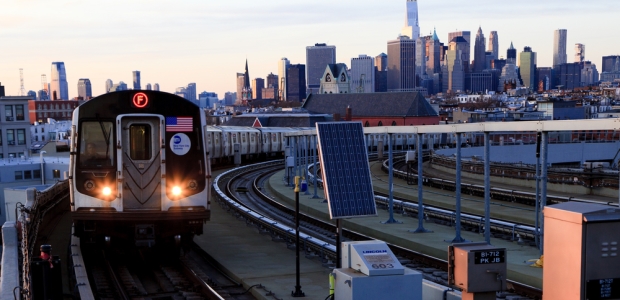
DOT Wants Input About Assaults on Transit Workers
The Federal Transit Administration opened what it calls a national online dialogue this week about assaults on transit workers and announced it will publish a Notice of Proposed Rulemaking that establishes rail and bus safety standards protecting rail and bus operators from the risk of assault. The online dialogue began June 13 and continues until July 25.
DOT's Federal Transit Administration opened what it calls a national online dialogue this week about assaults on transit workers and announced it will publish a Notice of Proposed Rulemaking that establishes rail and bus safety standards protecting rail and bus operators from the risk of assault. The online dialogue began June 13 and continues until July 25; it is intended to give both the transit industry and public stakeholders a platform to discuss their experience with assaults on transit workers, according to FTA.
Its Transit Advisory Committee for Safety issued a report last year titled "Preventing and Mitigating Transit Worker Assaults in the Bus and Rail Industry" that identified causes of assaults on transit workers and reviewed strategies to prevent them. Now FTA is looking for public recommendations on how best to prevent and mitigate assaults and to answer some of these key questions surrounding transit worker assault:
- What protective measures or barriers does your agency have in place to separate transit workers from passengers?
- What data points do you have on the number of assaults before and after barriers were installed? Has there been a reduction in assaults?
- What are the pros and cons of using barriers or other protective measures?
- What is the estimated cost of alternative mitigation tactics? How does this cost compare with the cost to install barriers on transit vehicles?
- How should we define assault? Is assault limited to physical violence or does it extend to verbal and other types of harassment or abuse?
- Do station and off-site employees (station managers, maintenance workers, custodial staff, customer service representatives, etc.) experience assault? Do your agency’s mitigations extend to contract and off-site workers?
- Safety measures are not one-size-fits-all, so how have or how can such measures be implemented across different transit modes and systems (bus, light rail, streetcar, etc.)?
- Would automated fare collection mitigate risk? Does your current fare collection system put transit workers at risk?
- Does your transit agency have data on what motivates assaults? If so, what do the data indicate?
FTA's website on the national online dialogue is available here.
The American Public Transit Association is another source for information about violent incidents on transit systems. APTA’s 2016 Risk Management Seminar took place this week (June 12-15 at the Hilton Albany in Albany, N.Y.) and focused on issues that transit risk managers, claims, and safety professionals face.